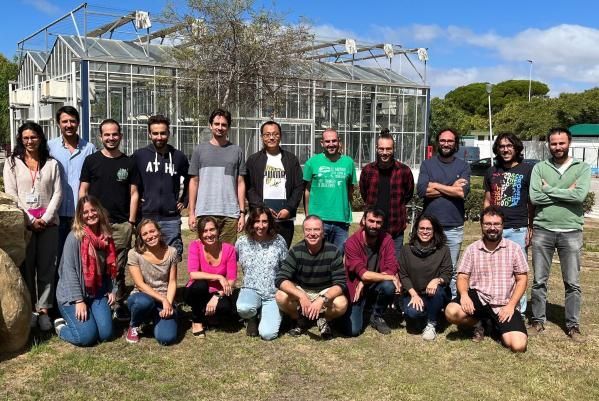Función, Ecología y Biodiversidad en Ecosistemas Mediterráneos
RNM923


Northern Arizona University
Flagstaff, Estados UnidosPublicaciones en colaboración con investigadores/as de Northern Arizona University (13)
2024
-
Reading tea leaves worldwide: Decoupled drivers of initial litter decomposition mass-loss rate and stabilization
Ecology letters, Vol. 27, Núm. 5, pp. e14415
2022
-
Different drivers of soil C accumulation in aggregates in response to altered precipitation in a semiarid grassland
Science of the Total Environment, Vol. 830
2021
-
Frequency-dependent tree growth depends on climate
Ecology, Vol. 102, Núm. 4
2020
-
Surface indicators are correlated with soil multifunctionality in global drylands
Journal of Applied Ecology, Vol. 57, Núm. 2, pp. 424-435
2018
-
Soil fungal abundance and plant functional traits drive fertile island formation in global drylands
Journal of Ecology, Vol. 106, Núm. 1, pp. 242-253
2016
-
Climatic conditions, soil fertility and atmospheric nitrogen deposition largely determine the structure and functioning of microbial communities in biocrust-dominated Mediterranean drylands
Plant and Soil, Vol. 399, Núm. 1-2, pp. 271-282
-
Human impacts and aridity differentially alter soil N availability in drylands worldwide
Global Ecology and Biogeography, Vol. 25, Núm. 1, pp. 36-45
2014
-
Biogeochemical indicators of elevated nitrogen deposition in semiarid Mediterranean ecosystems
Environmental Monitoring and Assessment, Vol. 186, Núm. 9, pp. 5831-5842
-
Climate and soil attributes determine plant species turnover in global drylands
Journal of Biogeography, Vol. 41, Núm. 12, pp. 2307-2319
2013
-
Decoupling of soil nutrient cycles as a function of aridity in global drylands
Nature, Vol. 502, Núm. 7473, pp. 672-676
-
Nitrogen deposition alters nitrogen cycling and reduces soil carbon content in low-productivity semiarid Mediterranean ecosystems
Environmental Pollution, Vol. 179, pp. 185-193
2012
-
Plant species richness and ecosystem multifunctionality in global drylands
Science, Vol. 335, Núm. 6065, pp. 214-218
-
Species richness effects on ecosystem multifunctionality depend on evenness, composition and spatial pattern
Journal of Ecology, Vol. 100, Núm. 2, pp. 317-330